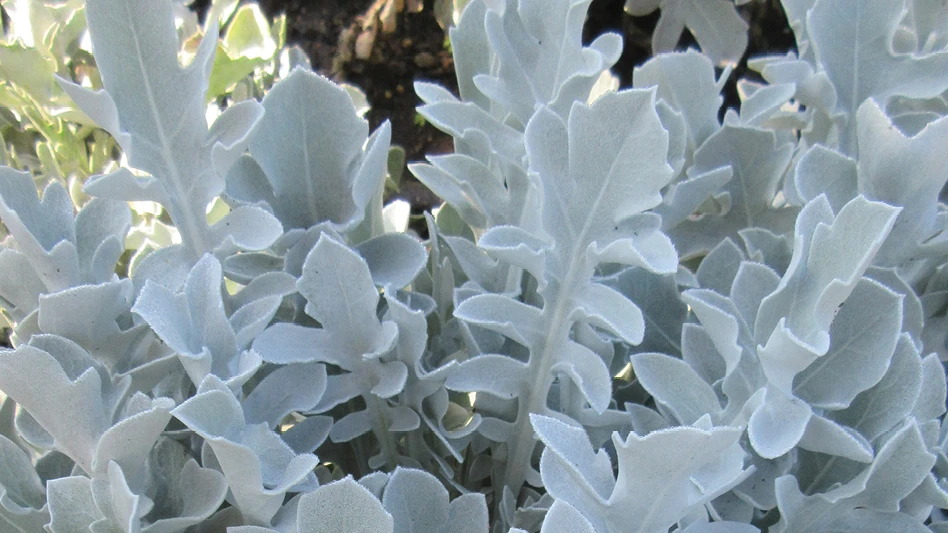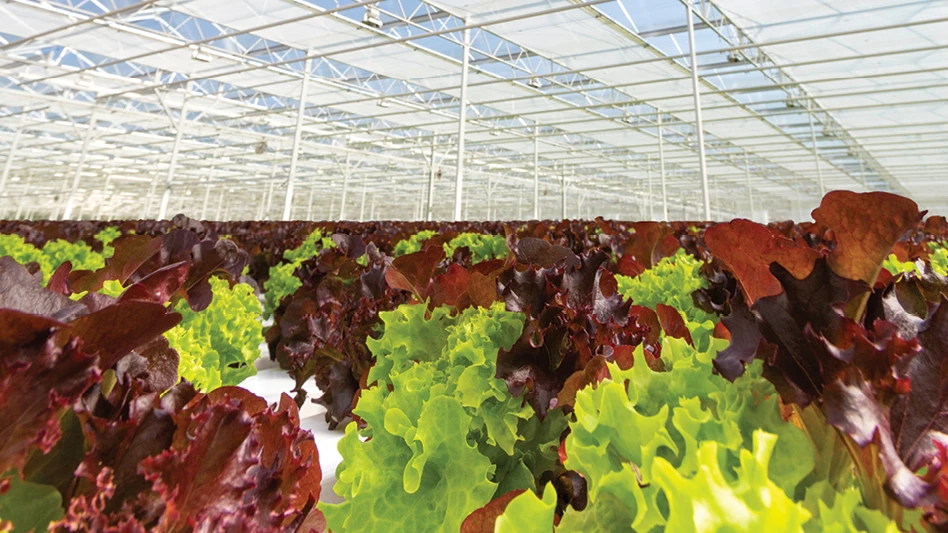 Something we hear a lot these days is that water is going to become the next oil in terms of value as a natural resource. Not only do we need more water in some locations, but we need to protect what we have, whether we live and work in the sometimes soggy Great Lakes region, or the arid west. Greenhouse operators can’t do too much about acquiring more of this valuable resource, but they can protect what lies right under their feet.
Something we hear a lot these days is that water is going to become the next oil in terms of value as a natural resource. Not only do we need more water in some locations, but we need to protect what we have, whether we live and work in the sometimes soggy Great Lakes region, or the arid west. Greenhouse operators can’t do too much about acquiring more of this valuable resource, but they can protect what lies right under their feet.
The leaching of fertilizer, particularly nitrogen and phosphorous, can pollute groundwater aquifers, particularly in greenhouses with dirt floors. There are four factors that contribute to this potential problem:
- Growing mixes don’t retain nutrients very well
- Watering containers and flats from above with a hose
- Using too much fertilizer
- Using soluble fertilizers
Conscious and compliant
Eliminating fertilizer runoff in greenhouses is not only good for the environment and a good business practice, it’s increasingly mandated by governing bodies.
“It (groundwater contamination) hasn’t been a problem yet,” says Robin Blumfield, farm management specialist at Rutgers University. “But I think greenhouses are being proactive because they’re worried about regulations that may be coming.”
Fortunately, there are steps operators can take to help the environment and be in compliance with future rules and regulations. Options include everything from installing a pricey but effective recycling system to following best management practices, which may include changes in the way plants are watered.
Best management practices
Having a fertilizer management plan in place is the first step to minimizing fertilizer use and mitigating potential runoff and groundwater contamination. This involves daily monitoring of plant health, monthly inspection of equipment and keeping tabs on pH and electrical conductivity (EC). The latter involves using the pour-through method and testing water that has run through plug trays, flats or other growing containers. The pH and EC should be uniform from plant to plant. Lack of uniformity could mean disparity in the rate and/or delivery of fertilizer to different plants.
This may be an obvious one, but do you really know how many nutrients your plants need? One way to find out is to obtain resources, like the comprehensive Ball RedBook, that show just how much each plant needs in terms of nutrients at different phases of development, i.e., vegetative to flowering.
The form of nitrogen being used in a fertilizer can contribute to excessive leaching, as well. In one study by University of Massachusetts-Amherst (Best Management Practices to Increase Fertilizer Efficiency and Reduce Runoff), it was discovered that the greatest amount of leaching from watering seed geraniums occurred with ammonium sulfate and calcium nitrate.
The right way to water
 The way plants in plug trays and flats are watered has a significant impact on how nutrients may be leached into the soil. Overhead watering is often criticized for being an inefficient method of water delivery and also the most likely to cause excessive leaching of nutrients. However, proper watering can keep leaching at a minimum.
The way plants in plug trays and flats are watered has a significant impact on how nutrients may be leached into the soil. Overhead watering is often criticized for being an inefficient method of water delivery and also the most likely to cause excessive leaching of nutrients. However, proper watering can keep leaching at a minimum.
“We’ve eliminated overhead watering by going to a drip irrigation system to reduce the amount of water runoff,” says Darrell Sorenson, head grower for Floral Plant Growers, LLC. The Denmark, Wisconsin based company is a grower of annual, perennial, herb and vegetable plants.
Even overhead watering can be improved upon to reduce water usage and fertilizer runoff. Greenhouse Management reported earlier (November 2014) on Kube-Pak, a grower of plugs and rooted cuttings, which uses a watering method developed by Dr. Will Healy of Ball Horticultural. This method involves applying water on a scale that quantifies the watering of flats and plug trays, ranging from 0 to 5. It’s a simple formula that can be shared with those assigned to the task of watering.
With Healy’s method, 0 means the plant is dead, while 5 indicates the plant is fully saturated. The numbers between 0 and 5 indicate different levels of watering that are easily conveyed to employees as well as customers. Kube-Pak waters with drip irrigation and hoses, supplying only enough water for the plant to get through to the next day. This economical, though more labor intensive method, reduces runoff and helps the plant develop strong roots.
Kube-Pak rejects the idea of recycling water, stating that recycled water creates a whole new environment in terms of disease pathogens.
Controlled release fertilizers
Sorenson and the staff at Floral Plant growers aren’t waiting to see if Wisconsin enacts rules and regulations for fertilizer runoff in greenhouses. They started using controlled release fertilizers (CRFs) about seven years ago, and haven’t looked back. Sorenson says the advantages of using CRFs include reduced nutrient runoff, particularly when greenhouse temperatures are closely monitored; high temperatures can cause CRFs to dissolve quicker. With CRFs Sorenson and his staff can apply appropriate rates of fertilizer for different plants.
“It’s been a big change,” says Sorenson of the switch to CRFs. “It has helped our product line be more consistent and it has actually helped us use less chemicals. I feel we’ve alleviated 95 to 98 percent of our fertilizer runoff.” Best management practices at Floral Plant Growers has earned the company kudos from Veriflora’s sustainable growing program.
Still, nutrient leaching can occur when applying CRFs. In the study by UMass Amherst mentioned earlier, it was noted that that while spills were easier to deal with using CRFs compared to water soluble fertilizer or liquids, the leaching of nutrients from pots can still be high. In this study the same amount of nitrogen was applied to 4-inch marigolds from water-soluble 20-10-20 and Osmocote 14-14-14 controlled release fertilizer. Surprisingly, more nitrogen leached through the medium 30 and 60 days after planting as the water-soluble fertilizer was applied. However, leaching was reduced when the CRF was applied on the surface of the medium and also when it was applied at 30-day intervals in reduced amounts.
Closed loop systems
Recycling water in greenhouses is possible and can certainly eliminate any potential for groundwater contamination. However, it comes with a hefty initial investment. Lucas Greenhouse, in Monroeville, New Jersey, first started experimenting with using ozone and UV light to disinfect water runoff in 2005.
Owner George Lucas took the plunge, spending more than $23,000 an acre to install a closed-loop Argus system, which includes a 600 gpm pump that circulates water through the system. The ozone disinfects the water, killing pathogens, the UV light kills the ozone, and a bioreactor destroys any chemicals in the water.
“One of the negatives of ozone is it takes out the iron and manganese, and in some crops, that’s critical,” Lucas says. He says they adjust their fertilizer program accordingly to compensate for the loss.
Lucas is working on determining the ROI of installing the water recycling system, but doubts there is any real savings. Protecting the environment is their motive for making the investment.
“I did it for environmental reasons,” Lucas says. “I don’t think there is a payback.”
Lucas Greenhouse is saving some money in fertilizer and by reducing their need to pump water from the wells on the property; plus, plants are healthier, which means they can demand a little higher price for their product.
If you’re thinking of ways to protect the environment and comply with current and future regulations on groundwater runoff, do your homework before you take the leap.
“Investigate your options,” Lucas tells other growers. “Know your pH and other variables.”
Neil is a horticulturist and freelance writer based in Sault Ste. Marie, Mich.
Latest from Greenhouse Management
- Veseris expands in turf and ornamental with acquisition of Tessman and Lynde companies
- BioTherm launches Ultimate Grower Climate Control System
- Jess Lyga joins Bailey sales team
- Happy holidays from the GIE Media Horticulture Group!
- North Carolina Nursery & Landscape Association announces new executive vice president
- Plant Development Services, Inc. unveils plant varieties debuting in 2025
- Promo kit available to celebrate first National Wave Day on May 3
- Applications now open for American Floral Endowment graduate scholarships





